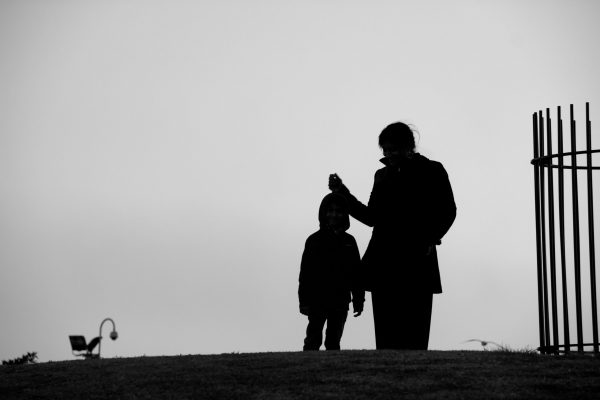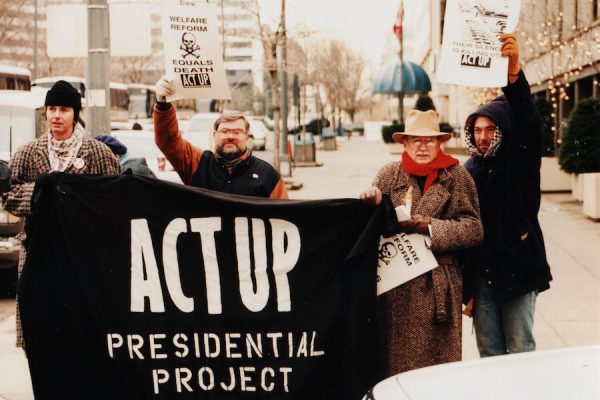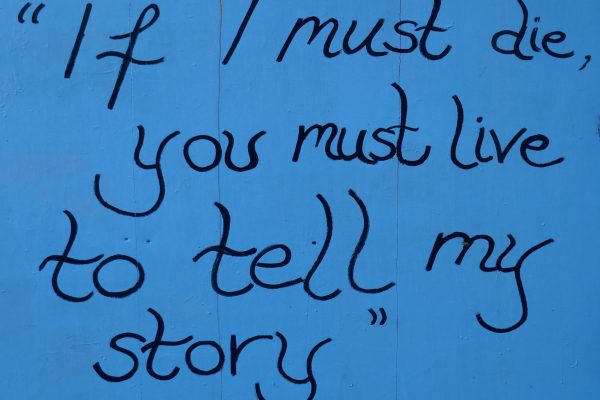Station Island
Seamus Heaney
Farrar, Straus and Giroux, $11.95 (cloth)
Last summer, I went to Ireland to talk with Seamus Heaney at his large, stone house, which looks across a busy commuter road to the wide, empty Strand and Dublin Bay. Later, I went north, curious to see what Heaney calls the “emblems of adversity” which have characterized Northern Ireland since the renewal of “troubles” in 1969. (Heaney left Belfast in 1972, determined to embody in his poetry “befitting emblems of adversity,” but equally determined to keep his poetry from becoming a “diagram of political attitudes.”) I wanted, as well, to see Mossbawn, Heaney’s original home, in County Derry, the pastoral counterpoint to the current “troubles,” the place where all his ladders start.
Within a day after crossing the heavily patrolled border into Northern Ireland, I was fitted out with sufficiently adverse emblems: the woman in Portadown who described her shellshocked son; the bricks in Belfast which wall in/out Protestant and Catholic communities; the bomb scare which emptied my Belfast hotel; the British patrols (camouflage-colored battle gear, rifles at the ready) moving ominously through Sunday morning streets, along the Falls Road, amid Catholic parents taking their children to early Mass; the Orange parade in Derry: stiff men in bowler hats and sashes, marching behind King Billy banners, stepping out to the furious booms of huge Lambeg drums, drums beaten by the mallets and bloody knuckles of strapping young men.
In placid contrast, between Belfast and Donegal lie the Vermont-like dairy lands of County Derry, as ample and serene as the hefty, bleary-eyed cows who muse upon it. Myself bemused, though guided by a map composed by Heaney, I missed his birthplace. (Heaney, in the midst of a social gathering at his Strand Road home—a setting of books, music, paintings, wine, and literary talk which might as easily have been set in Cambridge, England, or Massachusetts, as in Dublin—had drawn this map with absorbed satisfaction, retracing his route home again, copying that conception of home embedded in his mind, calling up the place names he has made mythic: Anhorish, Moyola, Toome, Brough.) Perhaps I had driven off Heaney’s map because to my American eyes there was, as Gertrude Stein once said, nothing there there.
Backtracking, however, I found it easily enough: a white-washed, stone, single-story, tin-roofed house, next to a large barn, both set back from the road, in a flat field bordered by the Moyola River and a Hibernian hall. (“I come from County Derry,/ born in earshot of a Hibernian hall/ where a band of Ribbonmen played hymns to Mary.”) But, somehow, it all was less, or other than I had imagined, for it looked like hundreds of other modest houses along the roads in Ireland and elsewhere.
The fault, no doubt, was in my own failure of imagination, but it is also true that the place Heaney memorializes in his verse is gone; only an archeological dig of the imagination—that is, only poetry—can resurrect what had been, can imagine what it might mean. The old Ireland—regional, rural, immobile, tribal, yet accommodating—has yielded to a new Ireland—national, urban-suburban, mobile, vindictively tribal. The thatched roofs have become tin. The “plantation” noted on Heaney’s map, land across the road from his childhood home, has dissolved into a row of similar “cottages” from which new residents come and go in automobiles, just as new people come and go from Heaney’s childhood home, long since sold. Ireland is another country now, its old distinctions blurred. In “The Birthplace” Heaney reflects: “Everywhere being nowhere,/ who can prove/ one place more than another?” In the end, Heaney’s quest comes to rest not in a particular place, but in language; to find his hidden Ireland, he must, as he urged himself in “North,” “Lie down/ in the word-hord.”
Heaney has moved far from his origins, his center, the symbolic pump behind his Mossbawn house: the pump which, he imagined, repeated “omphalos, omphalos, omphalos,” in “blunt and falling music,” the pump which drew the community together, a “living fountain.” Himself once one of the “big-voiced scullions, herders, feelers round/ haycocks and hindquarters,” Heaney is now an international figure, recently named to the Boylston Professorship of Rhetoric and Oratory at Harvard. Recently, too, he imagined himself diminished by exile, a shadowy figure “not about to set times wrong or right,/ stooping along, one of the venerators.” These lines come from the first of three sections of Station Island, Heaney’s latest volume of verse, and one which demonstrates his determination to increase his inventiveness in order to offset his weakening contact with his original source material. As he moves further away from Mossbawn, as what he has been fades faster, Heaney creates increasingly elaborate poetic constructions—”images and symbols adequate to our predicament”—to contain his vision of Ireland and recoup lost ground.
Concerned with issues of silence, exile, and cunning (Stephen Dedalus’s trinity), Station Island is most Joycean work. Joyce even appears as a presence, meeting the poet at the end of his imaginary visit to the island of the title, a thousand-year-old site of pilgrimage in Lough Derg, Donegal. While the overall movement of this volume seems inspired by Wordsworth, presenting the “growth of a poet’s mind” and the quest of the poet’s persona, the structure of the volume seems inspired by Joyce’s assertion (through Stephen Dedalus) that “art necessarily divides itself into three forms progressing from one to the next”: lyrical, epical, and dramatic. Growing through these stages, the poet seeks a personal and aesthetic state of wholeness, harmony, and radiance, the qualities of universal beauty as defined by Aquinas and invoked by Joyce-Stephen in A Portrait of the Artist As a Young Man. Such oneness, a state of being embodied in the brimming pump, Heaney lost when he grew up, grew away; it is a state now recollected only in tranquility, redrawn like a map home.
Part I of Station Island collects personal lyrics, “the form wherein the artist presents his image in immediate relation to himself.” It is filled with epiphanies of his family and still moments of youthful promise-when “the deer of poetry stood/ in pools of lucent sound/ ready to scare.” These poems invoke the daunting examples of other writers (Brian Moore at Malibu, Chekhov on Sakhalin) while the poet mediates in his “cunning middle voice.”
Heaney yearns for passage through loanings (uncultivated fields) of consciousness to the time of his “first place,” when big-voiced women sat in twilit kitchens, smoking pipes and saying “Aye,” a bucolic echo of Molly Bloom’s “Yes.” But the exiled poet must strive instead against a series of obstructions. Part II carries him through Station Island’s penitent grounds, where he encounters visions of the dead, figures who include assassinated friends and Joyce himself. This section is “epical,” “the form wherein he [the poet] presents his image in mediate relation to himself and others,” as Joyce-Stephen put it. Heaney meets one Simon Sweeney, for example, “an old Sabbath-breaker,” who urges him to “stay clear of all processions!” but Heaney is swept along by “a crowd of shawled women” onto “a drugged path/ I was set upon.” “Set” is the reverberatory word here, for the poet is determined to go back, to get to the center of his heritage, the place in which he, like an egg, was “set.” Heaney also meets William Carleton, who traveled the same roads to Station Island in the last century and wrote angrily about Catholic pilgrims. Heaney, characteristically, apologizes to Carleton (though Carleton betrayed his Catholic tribe): “I have no mettle for the angry role.” Then Carleton softens, encouraging Heaney:
All this is like a trout kept in a spring
or maggots sown in wounds—
another life that cleans our element.
Like Aeneas or Odysseus in the underworld, Heaney also meets fallen warriors. Most dramatically, he again encounters his assassinated cousin, already memorialized in the pastoral elegy, “The Strand at Lough Beg” (published in Field Work). Here Colum, the cousin, the voice of accusation in Heaney’s own mind, accuses Heaney of having “saccharined my death with morning dew.” The poet repents, dreams up the image of an old brass trumpet (poetry?), and concludes
I hate how quick I was to know my place.
I hate where I was born, hate everything
That made me biddable and unforthcoming.
Heaney, angered by his own hesitancy of word and deed, turns it around once again, turns it back on his projection of his cousin’s accusation. He can no more separate himself from what made him than “the eddy could reform the pool.”
The poet’s long night’s journey into day is a cleansing, a psychic pilgrimage for the remission of sins. Again and again, Heaney pulls back from political purposes; despite its emblems of savagery, Station Island lends no rhetorical comfort to Republicanism. Politic about its politics, “Station Island” is less about a united Ireland than about a poet seeking religious and aesthetic unity. As Heaney puts it in his translation of John of the Cross:
I am repining for this living fountain.
Within this bread of life I see it plain although it is the night.
This mystical impulse—embedded in the sanctified symbols of ordinary life, water and bread—is modified by the poet’s final encounter, with Joyce, his “voice eddying with the vowels of all rivers.” (Note Heaney’s intricate motif patterns: eddies, streams, rivers course between and unite the separate poems.) Joyce tells Heaney that his religious and political concerns are
a waste of time for somebody your age.
That subject people stuff is a cod’s game,
infantile, like your peasant pilgrimage.
Joyce urges the poet to “swim/ out on your own,” to “let go, let fly, forget.” How does the poet reconcile these contrary urgings, these psychic contentions: to immerse oneself in the living fountain or, like Stephen Dedalus, “to fly by those nets”?
Part III of Station Island is a series of monologues and meditations in the voice of Sweeney, the legendary Ulster king who was cursed, turned into a bird, and exiled. Sweeney—also the hero of Heaney’s last book, Sweeney Astray—is Heaney’s Yeatsean mask, the guise in which he can re enter his lost territories. These poems, then, are “dramatic,” in the Joyce-Stephen construct: the artist is detached, his nature dramatized in a persona. Heaney goes north to become a bird upon a beech branch, watching tanks advance up the roads of his former reign. At first Sweeney blames those he left who invited such invasion, the “pious and exacting and demeaned,” in language that Heaney would not use in his own more measured poetic voice. But in “Sweeney Returns,” Sweeney alters his tone when he encounters absence; the bird returns home, seeking his mate, but finds an empty bed: “I floundered/ in my wild reflections in the mirror.” The old landscape is not only violated by tanks, but also abandoned by old loves. What had been is no longer there. Political polemic yields to elegy.
In “Changes,” the poet returns with a friend from the wider world to Mossbawn, to the pump, which he finds has been rooted out of the earth and cast aside in long grass. They find, however, a bird nesting under its cover, wincing from the sudden light. The poet briefly recovers the bird, then relifts the cover to find the bird gone, an egg left behind. This poem suggests that life still pulses at the dark center of home, though poets (like freed birds) have soared away into the light. As the poet and bird have fled, so too has the central symbol of his “first place” (the pump) been uprooted, cast aside; yet the poet can map his way home again to the covered core of the self, the word-hord.
In “On the Road,” which concludes Station Island, “all roads are one.” Sweeney heeds Jesus’s “follow me” and flies to a cave whose deepest chamber reveals a drinking deer cut into the rock, a shadow of that “deer of poetry” first glimpsed by young Heaney at Mossbawn. The voices of Sweeney-Heaney merge, as the religious and aesthetic quests join in the volume’s final words:
For my book of changes
I would meditate
that stone-faced vigiluntil the long dumbsounded
spirit broke cover
to raise a dust
in the front of exhaustion.
The quest is complete, circular, beginning and ending in the “word-hord.” Heaney imagines epiphanic lyrics to hold moments, then an epical quest to the land of the dead to recover loss and remit sins; finally Heaney imagines a flight over barriers of time and space, a return home, to his own center.
Originally published in the February 1985 issue of Boston Review





